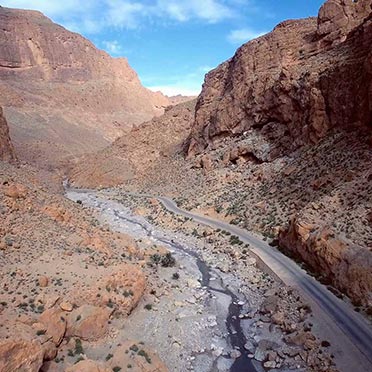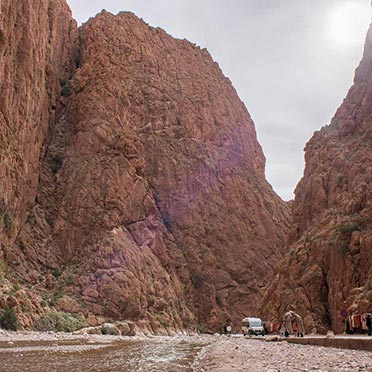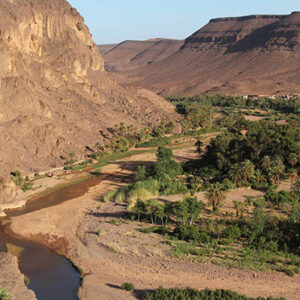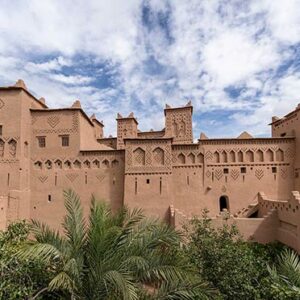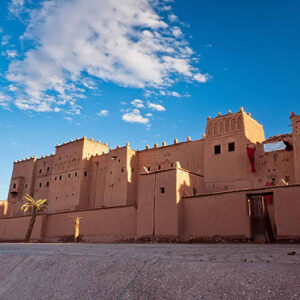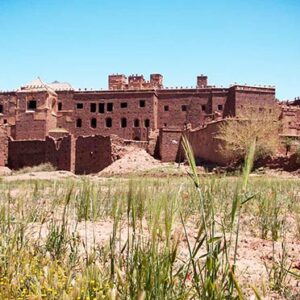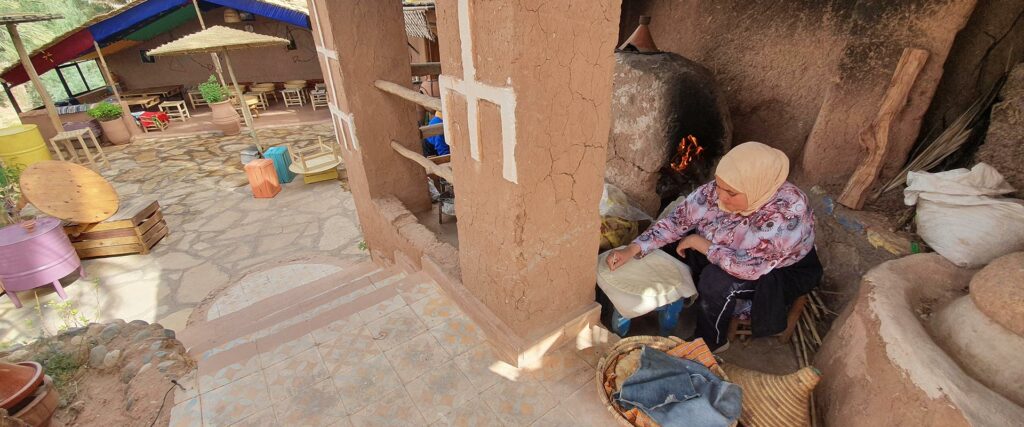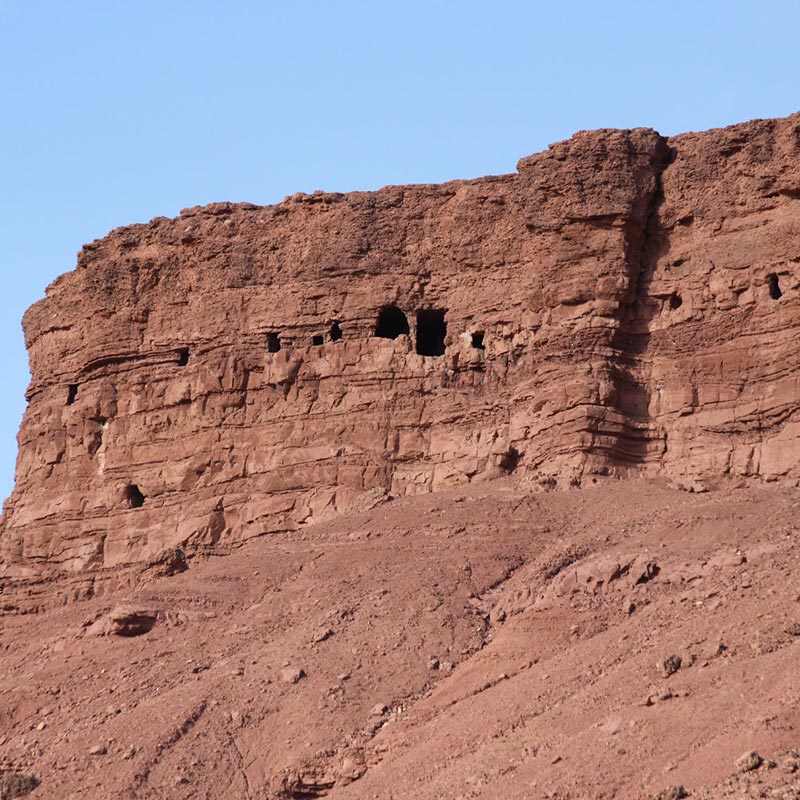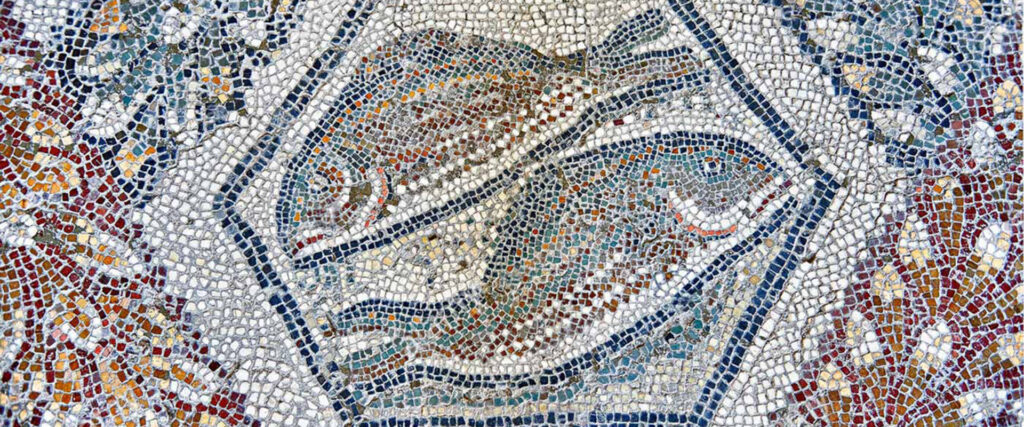The Todgha Gorges (Todra) are located at an altitude of 1300 meters at the foot of the High Atlas Mountains and extend over more than 30 km. In winter, the nearby snow-capped peaks offer a fantastic view, unlike spring when the cool climate and greenery reveal the splendor of the area. This arid and rocky land is dotted with lush oases. The palm grove blooms, and a winding river flows through the valley. Fruit trees thrive there: almond trees, pomegranates, peach trees, olive trees, fig trees, poplars, plum trees, and others. Tamarisks and oleanders spread a typical fragrance in the surroundings.
The Asdaf Mountain separates the oases of Todgha and Tinejdad.
Historically, Todgha has been a prosperous region since the time of the trade caravans that crisscrossed the Sahara towards northern Morocco. Its strategic position made it an important point on the caravan route.
The abundance of water and pasture led to the sedentarization of nomadic tribes in the valley. Todgha was also a melting pot area. It was inhabited by several ethnic groups: Berbers, Jews, Haratines (Blacks), and Arabs.
The main Berber tribes of the valley are said to be the Aït Todra, the Aït Aatta, the Aït Merghad, the Aït Senan, and the Aït Izdegh. The architectural style is authentically Berber: fortified villages built in pisé, including kasbahs and ksours. Today, the Todgha Valley is an attractive tourist destination. Its gorges have exceptional splendor. Cliffs about 300 meters high form steep gorges. Climbing enthusiasts flock there from all over. The Todgha River splits these mountain masses and continues its course winding through the valley. Gardens and fields line its banks. So many natural assets allow for various activities: walking tours in the Todgha Gorges, mountain hiking, mountain biking excursions, climbing in the gorges, excursions in the palm grove, horseback riding… Tourist services continue to be established in the region, including guesthouses and restaurants.
The inhabitants of the valley mainly live from agriculture and livestock farming. Tourism is increasingly becoming a source of income for the population. The emigration of some men from the region to Europe in the seventies has benefited the improvement of the standard of living of the inhabitants.
